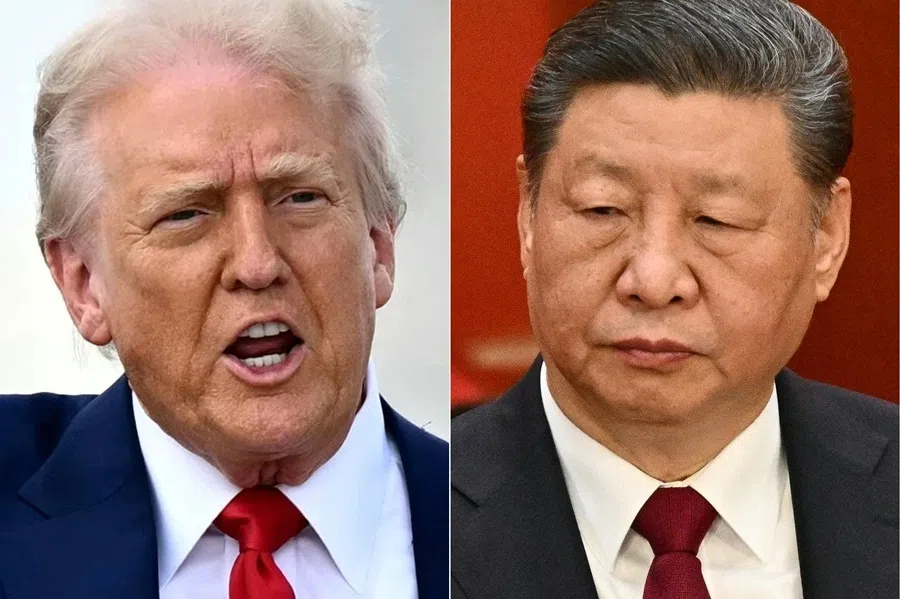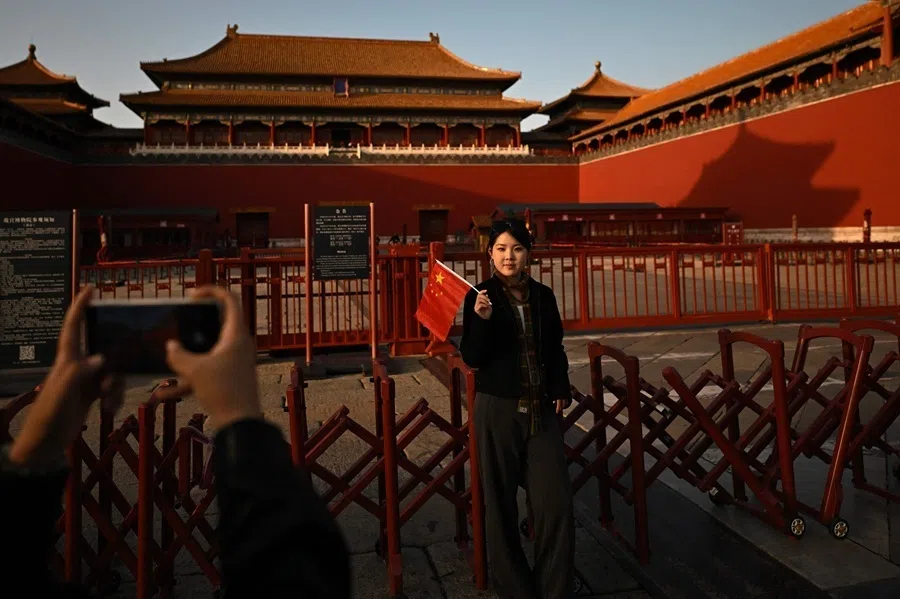Trump’s whirlwind ASEAN visit: Any substance behind the show?
Beyond the pomp and pageantry of Trump’s visit to Southeast Asia, some aspects of America’s policies towards the region have become clearer.
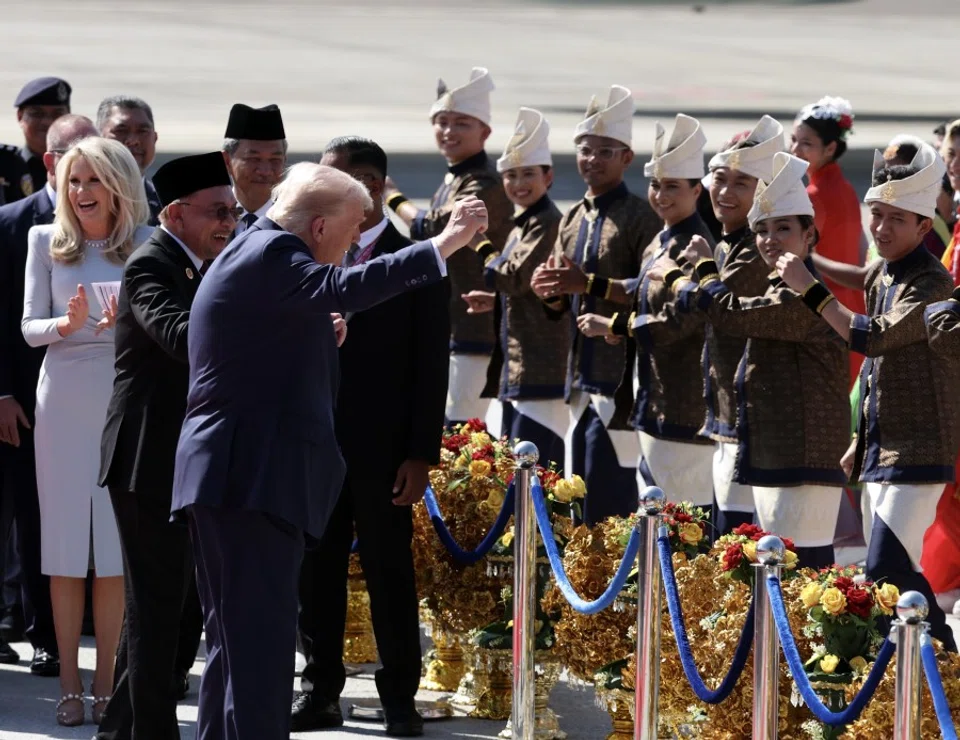
What are the key takeaways from US President Donald Trump’s just concluded attendance at the ASEAN Summit in Malaysia?
Let’s start with the optics. The visit was unquestionably heavy on showmanship, pomp and circumstance. Malaysian officials clearly took a page from the strategic playbook utilised to good effect by countries ranging from the UK to Saudi Arabia: treat the US President as an arriving hero, roll out the literal and figurative red carpet, and deploy grandiose cultural pageantry in celebration of the visit. The desired effect was apparently achieved. As Air Force One landed on the tarmac in Malaysia, a visibly delighted President Trump danced to the thundering welcome of traditional Malaysian drummers awaiting his arrival.
But the ceremony allowed Trump to take the liberty of adding the Thailand-Cambodia conflict to the rapidly expanding list of “wars” he has “ended”. In his mind at least, this would bolster his case for a Nobel Peace Prize.
Peacemaker-in-chief?
Later in the day, Trump likewise took evident pleasure in presiding over a ceremony that seemed designed to position Trump as “peacemaker-in-chief”. Trump oversaw a somewhat contrived “signing ceremony” establishing “peace” between Thailand and Cambodia, although the actual document was merely a joint declaration on the meeting in Malaysia, arrived at without any third-party involvement.
These countries have a long history of successfully managing their tense, periodic border skirmishes without any assistance from the White House, and the latest instance was no exception. But the ceremony allowed Trump to take the liberty of adding the Thailand-Cambodia conflict to the rapidly expanding list of “wars” he has “ended”. In his mind at least, this would bolster his case for a Nobel Peace Prize.
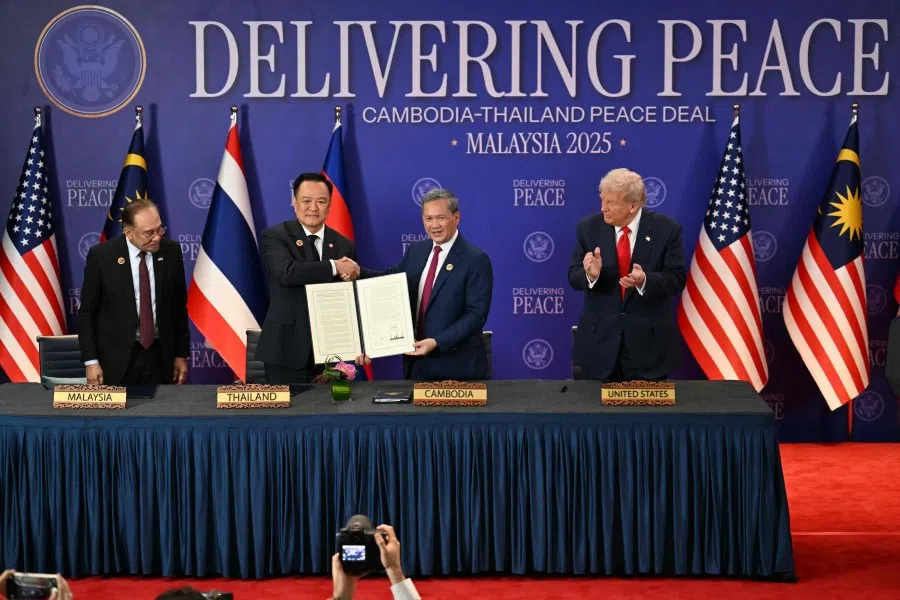
Aside from the showmanship and pageantry of Trump’s visit, several important substantive points did emerge. The US has at least partially fleshed out various agreements or frameworks it has recently negotiated in the region. It is now becoming even more clear that the US is determined to use regional trade deals to tighten the screws on China. Somewhat surprisingly, however, it also appears that the US might be willing to show more flexibility towards its Southeast Asian partners than was previously apparent.
Trade agreements reached
Malaysia and Cambodia reached what are being referred to as “Reciprocal Trade Agreements” with the US. Roughly two-thirds of the provisions are essentially the same. These include the previously announced reduction in the US reciprocal tariff rate (along with certain exemptions for products not made in the US). Both countries will offer lower (in some cases, zero) tariffs on US products and relaxed regulations on US goods such as automobiles and agriculture. Both countries also agreed to purchase Boeing aircraft and facilitate US access to critical minerals.
Despite its previous “take no prisoners” approach to trade negotiations, the Trump team appeared to be willing to make some accommodation for Cambodia’s developmental status.
The national security provisions obligate both countries to align with US measures such as duties, prohibitions, or import restrictions taken against third parties that are relevant to protecting the economic or national security of the US. The US will notify such measures to both countries so they can adopt, maintain, or develop a timeline for similar policies. This will certainly not go unnoticed in Beijing.
The areas of difference between the two agreements are noteworthy. Despite its previous “take no prisoners” approach to trade negotiations, the Trump team appeared to be willing to make some accommodation for Cambodia’s developmental status. Indeed, the preamble explicitly acknowledges Cambodia's status as a least developed country.

While Malaysia is to establish an investment security review mechanism (primarily targeted towards China), Cambodia is only required to provide information when requested by the US. Malaysia has committed to a target of US$70 billion investment in the US over ten years. Cambodia has demonstrated only a commitment to facilitate investment, with no dollar target.
Thailand and Vietnam signed framework agreements that still need to be finalised. As with the Malaysia and Cambodia agreements, these countries agreed to eliminate tariffs on substantially all trade with the US, ease regulatory burdens, and adopt, in some instances, US technical standards. Both countries agreed to specified purchases of US products, including energy, aircraft, and agriculture. The US maintains the previously announced reduced reciprocal tariff rate on these countries, but will look for sectors where it can offer exemptions, presumably on products the US does not produce.
The Thailand framework includes more details in areas such as digital trade, labour, environment, non-tariff barriers, and intellectual property rights (IPRs). The Vietnam framework references these areas more generally.
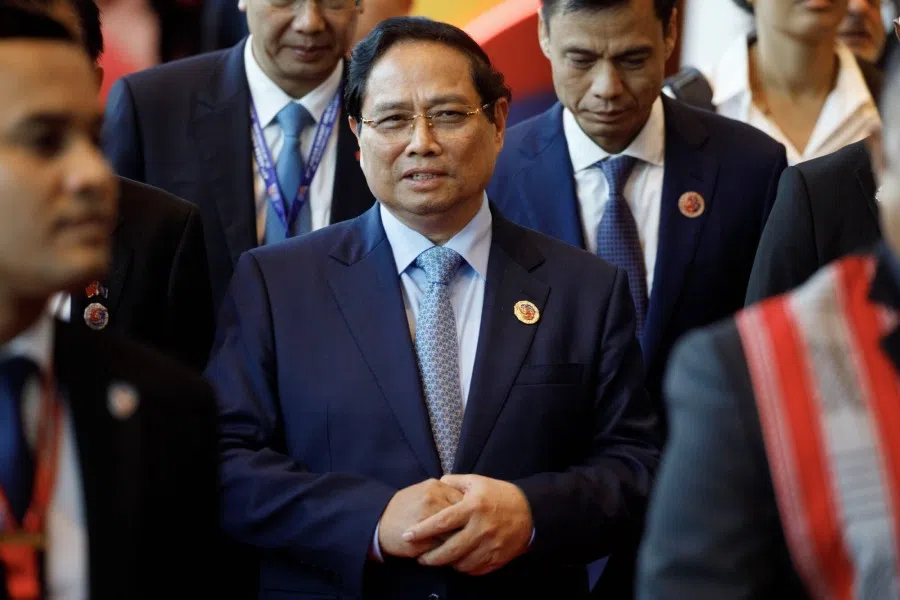
Interestingly, Thailand has accepted language referencing “third parties” (presumably directed towards China) on issues related to “investment security”. The Vietnam framework makes no mention of “third parties”. If this holds through the final agreement, it would appear that the US has made a tactical decision to squeeze less hard on Vietnam’s relationship with China.
The US’s determination to leverage its relationships in Southeast Asia to apply pressure on China and to reduce, to the extent possible, its preeminence in regional supply chains has become even more blatantly evident.
Pressure on China, uncertainty for the region
A slightly clearer picture of US approach to Southeast Asia had begun to come into focus. The US’s determination to leverage its relationships in Southeast Asia to apply pressure on China and to reduce, to the extent possible, its preeminence in regional supply chains has become even more blatantly evident. Less expected was the revelation that the US also appears willing to accommodate the aforesaid concerns of regional countries, such as Cambodia’s developmental concerns and Vietnam’s emphasis on its relationship with China.
Any sense of relief in the region should be muted, however. There is still a lack of clarity about how the US intends to apply the 40% transshipment tariff which could potentially be massively disruptive for supply chains in the region. In addition, the threat of additional tariffs continues to loom over the region. The US has not made any commitments about exempting countries in the region from potentially draconian sector specific tariffs implemented under national security or other provisions of US law.
While the region is seeing a few rays of sunshine, it is far from being out of the woods.
This article was first published in Fulcrum, ISEAS – Yusof Ishak Institute’s blogsite.



